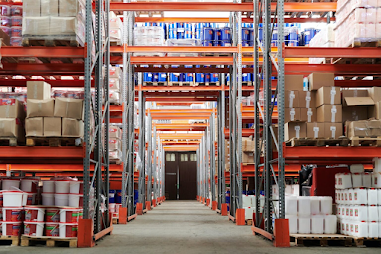Keeping Hazardous Materials Separate During Storage and Transport
Chemical Storage and Hazardous material shipment require specialized knowledge and capabilities that are not available in other logistics operations. Chemical compounds can be explosive, dangerous to people, or hazardous to the environment, so it is vital that they are stored and transported properly to minimize risk and avoid accidents. Not all chemicals are hazardous, but even less volatile or relatively safe chemicals may require special storage to reduce the risk of leaks, spills, or adverse reactions.
Chemical Classifications for Safety and Handling.
The various systems used to categorize chemical materials contribute significantly to the complexity of chemical logistics. Numerous regulatory standards apply to hazardous materials storage and hazardous materials transportation to guide businesses that must store and use chemicals. Below are several of the most common.
Hazardous Material Storage.
To establish safe hazardous materials storage operations, you must first understand the various types of chemical products. The Occupational Safety and Health Administration (OSHA) has issued specific guidelines in its Hazard Communication Standard (HCS) to assist chemical manufacturers and chemical logistics operators in clearly defining the level of hazard posed by the products with which they work. The HCS divides hazardous chemicals into two broad categories to begin classifying them:
1. Physical hazards. OSHA categorizes a chemical as a physical hazard when scientific evidence indicates that it is explosive, unstable. flammable, combustible, reactive with water, or oxidative, among other threats.
2. Health hazards. A chemical can be considered hazardous if there is enough scientific evidence that it will harm human health if exposed to it. Health hazards can range from minor irritants to more serious hazards such as carcinogens, corrosives, and toxins.
Hazardous Material Transportation.
Transporting chemicals and hazardous materials shipment requires adherence to rigorous standards of federal, state, and local regulations. The method also requires the selection of a coating that is strong enough to prevent corrosion, ensure cargo purity, and maximize uptime.
The United States Department of Transportation (USDOT) classifies hazardous chemicals into nine categories. Understanding these classes can assist in determining the best storage and transportation conditions:
- Explosives
- Gases
- Flammable Liquid and Combustible Liquid
- Flammable Solid, and Dangerous When Wet
- Oxidizer and Organic Peroxide
- Poison (Toxic) and Poison Inhalation Hazard
- Radioactive
- Corrosive
- Miscellaneous
Each of these classes is further subdivided by the DOT. The class and subclass of a chemical influence how it must be packaged and labeled for transportation, which can have a direct impact on where and how the product is stored in the warehouse.
Separating Chemicals in the Warehouse.
Chemical products are divided and stored in chemical warehouses based on the specific threats they pose, following the above-mentioned USDOT and OSHA guidelines. These threats are usually classified into 6 categories:
- Corrosives
- Explosives
- Flammable
- Gases
- Oxidizers
- Toxins
Contact OctoChem today to get certified chemical warehousing and hazardous material transportation.


Comments
Post a Comment